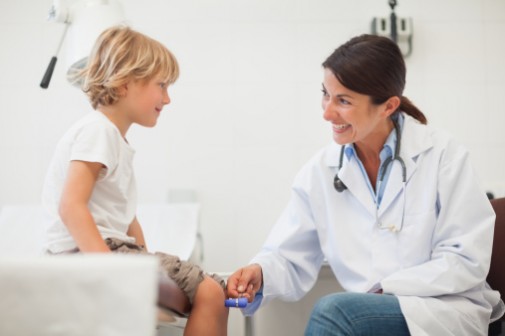Keeping kids’ knees safe

With more kids playing sports and many getting involved in competitive training at a younger age, anterior cruciate ligament (ACL) injuries have been on the rise for the past 20 years.
These injuries can be devastating to young athletes and often require surgery and extensive rehabilitation. To help keep kids on the field and out of the operating room, the American Academy of Pediatrics (AAP) has released new guidelines to help prevent and treat ACL injuries.
The AAP recommends that coaches use neuromuscular training to reduce the risk of ACL injuries. This includes exercises such as plyometrics and strengthening exercises such as jumping, stretching, and balance training.
According to one paper cited in the report “Anterior Cruciate Ligament Injuries: Diagnosis, Treatment and Prevention,” training was tied to a 72 percent reduced risk of ACL injuries among female athletes younger than 18 years old. Teen girls are two times more likely to suffer an ACL injuries compared to teen boys playing the same sports due to hormonal difference and smaller muscle mass. They are also more likely to have noncontact ACL injuries compared to boys, according to the report
“Prevention and training exercises are the best options to combatting an ACL injury,” Dr. Steven Chudik says, a board certified orthopedic surgeon and sports medicine physician at Advocate Good Samaritan Hospital in Downers Grove, Illinois, who has developed ACL injury prevention programs.
The AAP also address ACL surgery for kids. The Academy recommends that if surgery is necessary, a technique which minimizes growth plate damage should be used. The growth plate produces new bone tissue and determines the final length and shape of bones.
Growth plate damage can lead to deformities and uneven leg growth, according to Dr. Chudik who has performed numerous surgeries of this kind using an arthroscopic technique called physeal-sparing surgery, where the ACL ligament is replaced while avoiding the growth plate completely.
“While surgery and physical therapy can restore stability to the knee and get athletes back in the game in about four to six months, athletes need to take care that they do not reinjure their knee or injure the opposite ACL,” Dr. Chudik says. “Knowing when it is safe to return is very important in preventing reinjury.”
Related Posts
Comments
About the Author
health enews staff is a group of experienced writers from our Advocate Health Care and Aurora Health Care sites, which also includes freelance or intern writers.

















